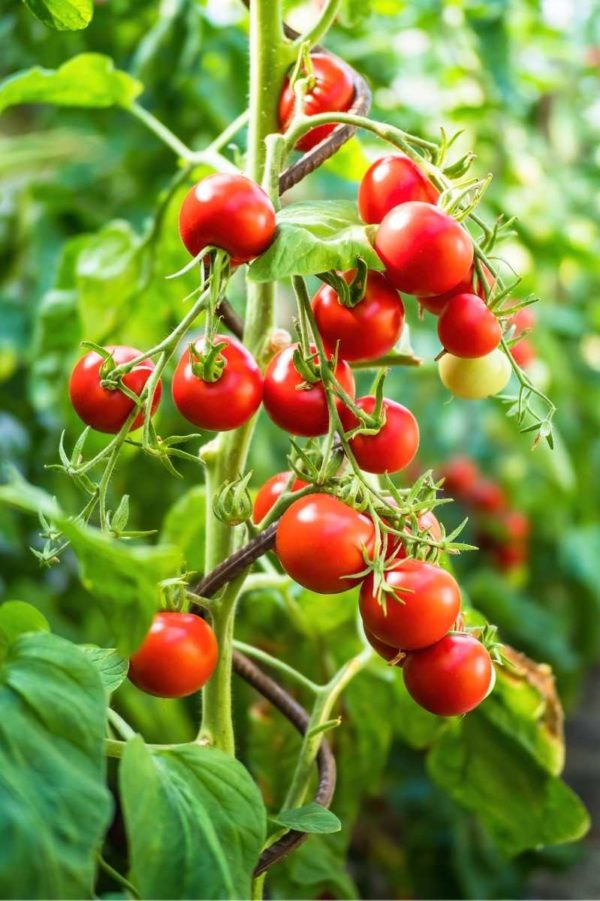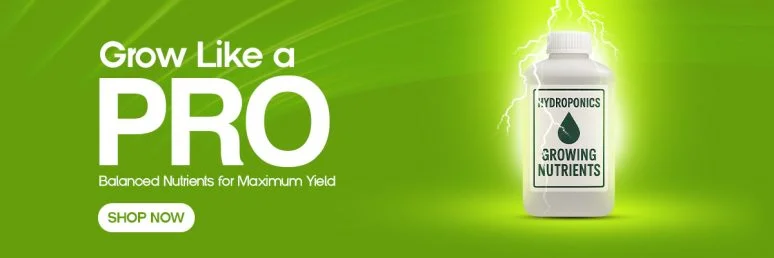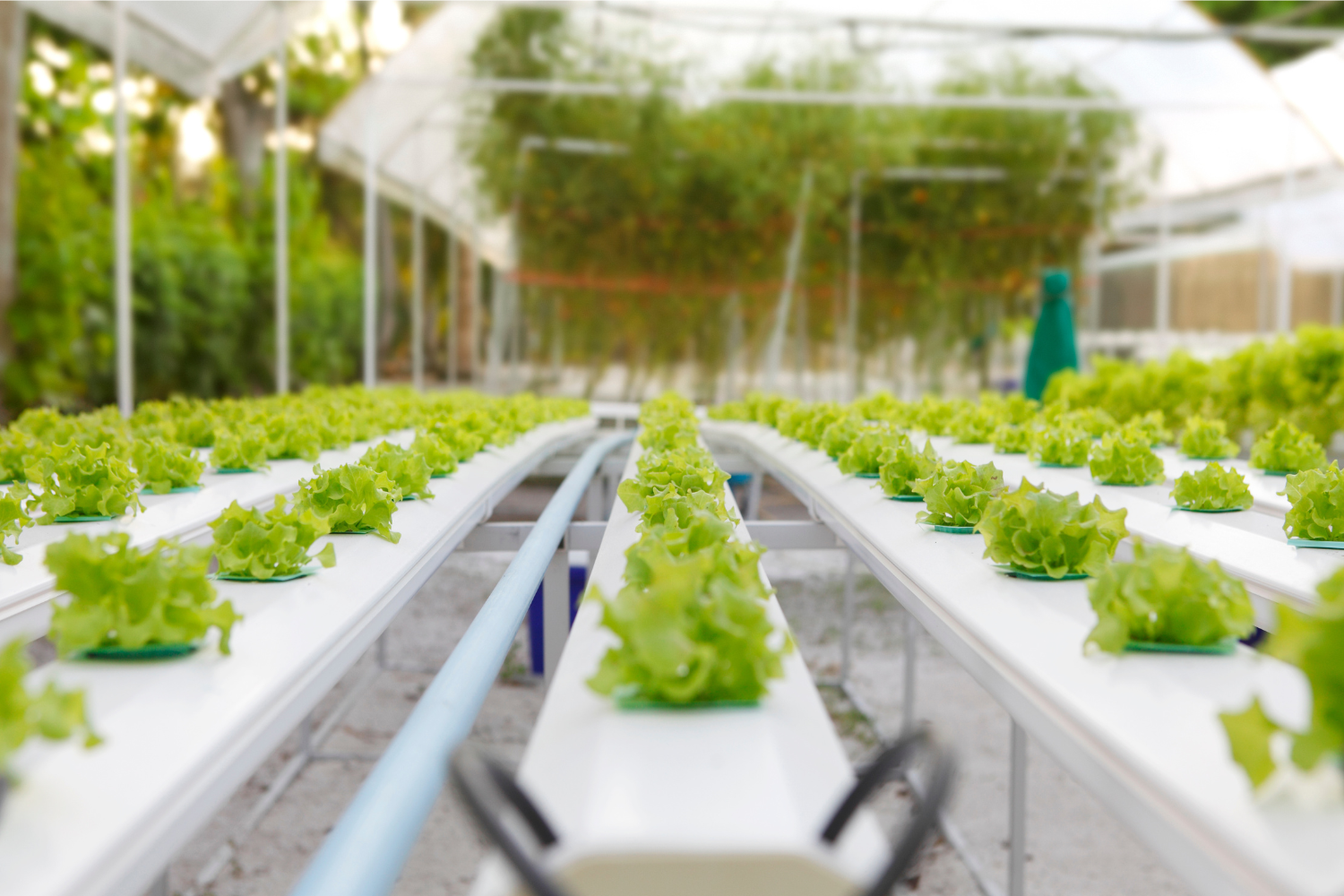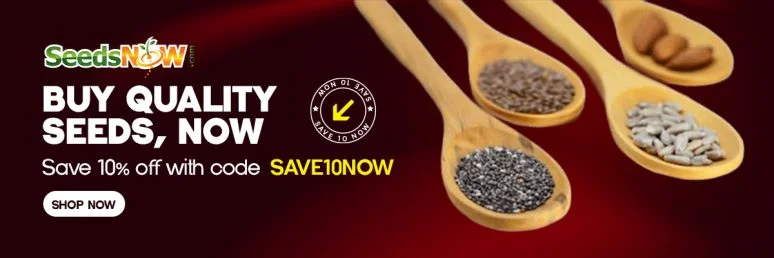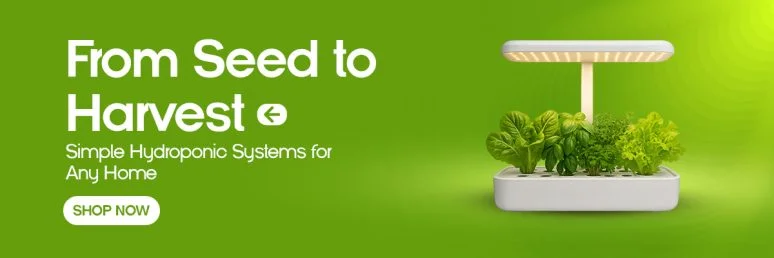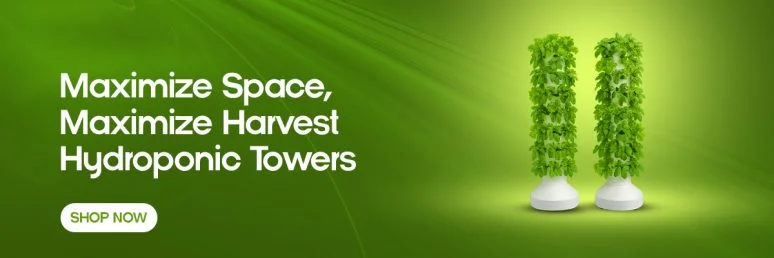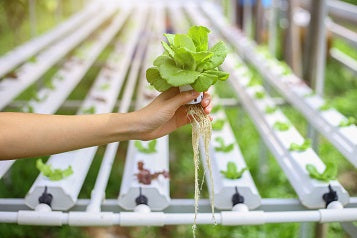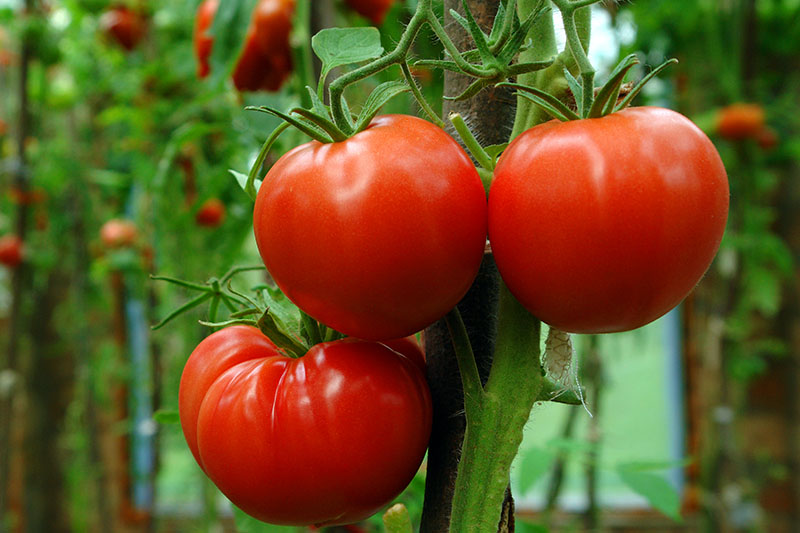Best Fertilizers for Hydroponic Tomatoes: Complete Buyer’s Guide

Key Takeaways
- Hydroponic tomatoes require specialized nutrient solutions with precise NPK ratios that change throughout the growing cycle
- Quality hydroponic fertilizers like General Hydroponics Flora Series and Masterblend 4-18-38 provide complete nutrition for maximum yields
- Maintaining proper calcium levels is crucial for preventing blossom end rot in hydroponic tomato systems
- The best hydroponic fertilizers allow for easy pH adjustment and contain both macro and micronutrients in balanced formulations
- Proper nutrient solution management, including regular monitoring and adjustment, is as important as the fertilizer choice itself
Growing tomatoes hydroponically unlocks potential for incredible yields and flavor that soil-grown plants simply can’t match. But the secret to those picture-perfect clusters of juicy fruit lies in choosing the right fertilizer. Unlike traditional gardening, hydroponic systems put you in complete control of your plants’ nutrition—an exciting responsibility that can dramatically influence your harvest success.
At Hydro Harvest Solutions, we’ve tested dozens of nutrient formulations to identify what truly works for hydroponic tomato growers. Our research has shown that the difference between mediocre and magnificent tomatoes often comes down to the precise balance of nutrients your plants receive. This comprehensive guide will walk you through everything you need to know about selecting and using the perfect fertilizer for your hydroponic tomatoes.
Why Your Hydroponic Tomatoes Need Special Fertilizer
“Companion Plants for Tomatoes …” from growfully.com and used with no modifications.
In traditional soil gardening, tomato plants draw nutrients from a complex ecosystem of organic matter, minerals, and microorganisms. Hydroponics strips away this natural buffer, placing you in direct control of every nutrient your plants receive. This means standard garden fertilizers simply won’t cut it. Hydroponic tomatoes require perfectly balanced solutions that deliver essential elements in forms they can immediately absorb through their roots.
Tomatoes are notoriously heavy feeders, consuming large quantities of nutrients during their growing cycle. Their requirements also change dramatically as they transition from vegetative growth to flowering and fruiting stages. Using specialized hydroponic fertilizers allows you to adjust nutrient ratios precisely as your plants develop, promoting robust growth exactly when and where it’s needed.
Additionally, hydroponic nutrients must remain stable in water without creating precipitation or buildup that can clog systems and damage roots. Quality hydroponic formulations are specifically designed to maintain solubility while providing complete nutrition in forms your tomato plants can readily utilize.
Essential Nutrients for Thriving Hydroponic Tomatoes
Success with hydroponic tomatoes begins with understanding the complete nutritional profile these plants require. While marketing often focuses on NPK ratios, a truly effective hydroponic fertilizer delivers a comprehensive spectrum of both macro and micronutrients.
Primary Macronutrients (NPK)
Nitrogen, phosphorus, and potassium form the foundation of any fertilizer program. For tomatoes, the ideal balance shifts throughout the growing cycle. During early vegetative growth, higher nitrogen levels promote lush, green foliage. As plants begin flowering, phosphorus becomes increasingly important, supporting energy transfer and reproductive development. Finally, during fruit development, potassium takes center stage, enhancing fruit quality, size, and flavor while improving disease resistance.
This dynamic nutritional demand explains why many experienced hydroponic growers prefer multi-part nutrient systems that allow for customized ratios at each stage. Single-part solutions, while convenient, often represent a compromise that may limit your plants’ full potential at critical development points.
Secondary Nutrients That Prevent Deficiencies
Calcium, magnesium, and sulfur play vital supporting roles in tomato development. Calcium deserves special attention, as deficiencies lead directly to blossom end rot—that dreaded dark, sunken spot on the bottom of fruits that can ruin your harvest. In hydroponic systems, calcium uptake can be challenging even when present in your solution, making proper balancing essential.
Magnesium serves as the central atom in chlorophyll molecules, making it crucial for photosynthesis. Deficiencies appear as interveinal chlorosis—yellowing between leaf veins while veins remain green—starting in older leaves. Sulfur, often overlooked, is essential for protein synthesis and enzyme activity that supports overall plant health.
Most quality hydroponic nutrients include these secondary elements, but their ratios and availability can vary significantly between brands. When evaluating options, pay particular attention to calcium levels and forms, as this can be a limiting factor in tomato production.
Nutrient Deficiency Quick Reference
Calcium: Blossom end rot, stunted growth tips
Magnesium: Interveinal chlorosis in older leaves
Sulfur: General yellowing similar to nitrogen deficiency but starting with newer growth
Micronutrients for Maximum Flavor and Yield
The true magic of exceptional hydroponic tomatoes happens at the micronutrient level. Iron, manganese, zinc, copper, boron, molybdenum, and chlorine are required in tiny amounts but create massive impacts on flavor development, fruit set, and overall plant health. These elements activate enzymes, support cell wall development, and facilitate crucial metabolic processes. Premium hydroponic fertilizers provide these micronutrients in chelated forms—specially bound to organic molecules that keep them available for root uptake even in challenging water conditions.
Types of Hydroponic Fertilizers for Tomatoes
“Best Fertilizers to Use in Hydroponics …” from www.greenwaybiotech.com and used with no modifications.
Navigating the world of hydroponic nutrients can be overwhelming with the variety of formulations available. Understanding the key differences between types will help you select the best option for your specific system and growing goals.
Liquid Concentrates: Quick Absorption Benefits
Liquid nutrient concentrates represent the most user-friendly option for many hydroponic gardeners. These pre-dissolved solutions mix instantly with water, eliminating concerns about solubility or undissolved particles. Their immediate availability makes them ideal for systems where rapid nutrient adjustments may be necessary, such as in NFT (Nutrient Film Technique) or DWC (Deep Water Culture) setups where plants have continuous access to the nutrient solution.
The convenience of liquid nutrients comes with tradeoffs, however. They typically cost more per feeding than powder alternatives, contain more water weight (increasing shipping costs), and may have shorter shelf lives once opened. For small-scale growers or those prioritizing simplicity over absolute cost-efficiency, these disadvantages are often outweighed by the precision and ease of use liquid concentrates provide. For more insights on nutrient choices, you can explore discussions in the Cheapest Hydroponic Nutrient Thread.
Powder Formulations: Cost-Effective Options
Powder concentrates offer significant cost advantages for serious hydroponic tomato growers. These highly concentrated formulations deliver more nutrients per dollar and provide superior shelf stability—some properly stored powder nutrients remain viable for years. For larger operations or committed hobbyists, the economic benefits of powder formulations can be substantial over time.
The primary challenge with powdered nutrients lies in proper dissolution. Some elements can interact when concentrated, potentially forming precipitates or becoming temporarily unavailable. Premium powder formulations address this through careful manufacturing processes, often separating incompatible components into multiple parts that are mixed sequentially. Always follow the manufacturer’s mixing instructions precisely, typically adding powders to water (not water to powders) and allowing complete dissolution before adding the next component.
Pre-Mixed Solutions vs. Base Nutrients
The choice between pre-mixed and component-based nutrients represents a fundamental decision for hydroponic tomato growers. Pre-mixed solutions offer simplicity and consistency—just measure and pour according to directions. These all-in-one formulations work well for beginners or those running multiple small systems where convenience outweighs customization needs.
Base nutrient systems, typically consisting of 2-3 separate components, provide precision control for experienced growers. By adjusting the ratios between components, you can create custom formulations optimized for each growth stage. This flexibility becomes particularly valuable for tomatoes, whose nutritional requirements shift dramatically from vegetative growth through fruiting. The trade-off comes in complexity—you’ll need to understand nutrient interactions and maintain careful records of your formulations.
Top 5 Best Fertilizers for Hydroponic Tomatoes
“10 Secrets to Growing Amazing Tomatoes …” from eising.ca and used with no modifications.
After extensive testing in our research facility and gathering feedback from commercial growers, we’ve identified the five fertilizer systems that consistently produce exceptional results with hydroponic tomatoes. Each offers unique advantages depending on your experience level, system type, and growing goals. For those interested in optimizing their hydroponic setup, understanding the difference between red and blue LED grow lights can also enhance plant growth.
1. General Hydroponics Flora Series
The Flora Series three-part nutrient system has earned its reputation as the gold standard for hydroponic tomato cultivation. Consisting of FloraGro, FloraMicro, and FloraBloom components, this system allows precise control over NPK ratios throughout your plants’ lifecycle. By adjusting the mixing ratios according to the manufacturer’s feeding charts, you can create perfectly tailored nutrition for seedlings, vegetative growth, and vegetative growth, and heavy fruiting.
What truly distinguishes the Flora Series is its comprehensive micronutrient profile. The FloraMicro component contains a complete spectrum of chelated trace elements that support enzyme function and metabolic processes essential for flavor development. Commercial growers particularly appreciate the system’s stability in recirculating setups and its compatibility with both hard and soft water sources through simple ratio adjustments.
2. Masterblend 4-18-38 Complete Tomato Formula
Masterblend’s three-part powder system (Masterblend 4-18-38, Calcium Nitrate, and Magnesium Sulfate) has developed an almost cult-like following among serious hydroponic tomato growers. Originally formulated for commercial greenhouse operations, this professional-grade nutrient system delivers exceptional value while producing consistently outstanding results. The high phosphorus and potassium ratios specifically target fruiting plants, promoting heavier yields and intensified flavor profiles. For those interested in optimizing their hydroponic setup, understanding how many hours of light hydroponic plants need can be crucial for maximizing growth.
The most compelling advantage of the Masterblend system is its cost-effectiveness—often providing nutrition at a fraction of the price of premium liquid nutrients while matching or exceeding performance. The tradeoff comes in mixing complexity, as the components must be dissolved separately and in the correct sequence to prevent precipitation. For those willing to follow the process precisely, the results and savings are well worth the extra effort.
3. Advanced Nutrients Bloom, Micro & Grow
Advanced Nutrients has built its reputation on scientifically formulated products specifically designed to optimize pH and nutrient availability. Their three-part base nutrient system incorporates proprietary “pH Perfect Technology” that automatically stabilizes solution pH within the ideal range for hydroponic tomatoes. This self-adjusting capability virtually eliminates the need for constant pH monitoring and adjustment—a significant advantage for both beginners and experienced growers managing multiple systems.
Beyond pH management, the Advanced Nutrients system includes fulvic acid to enhance nutrient absorption and a comprehensive micronutrient profile that supports robust fruit development. The premium price point reflects these advanced formulation features, making it most appropriate for serious hobbyists and small commercial operations where labor savings offset the higher product cost. For those interested in exploring other crops, you might want to learn how to grow hydroponic collard greens indoors.
4. FoxFarm Liquid Nutrient Trio
FoxFarm’s Grow Big, Tiger Bloom, and Big Bloom liquid nutrients have crossed over from traditional gardening to become favorites among hydroponic tomato enthusiasts. Unlike systems designed exclusively for hydroponics, this trio incorporates organic components and biological extracts that add complexity to the nutrient profile. The result is often described as producing tomatoes with richer, more nuanced flavors that closely resemble high-end heirloom varieties.
The biological components in FoxFarm products require special consideration in recirculating hydroponic systems. The organic elements can potentially support beneficial microorganisms but may also lead to biofilm development in tubing and reservoirs. Many growers address this by incorporating beneficial bacteria products and maintaining rigorous system cleaning protocols. For those running drain-to-waste systems or simple DWC setups with regular solution changes, these management challenges are minimized.
5. Dyna-Gro Liquid Grow & Bloom
Dyna-Gro offers perhaps the simplest approach to hydroponic tomato nutrition while still delivering professional-quality results. Their two-part system consists of “Grow” for vegetative stages and “Bloom” for flowering and fruiting, each containing all essential macro and micronutrients in a single bottle. This streamlined approach eliminates mixing complexity while still allowing stage-appropriate nutrition through product alternation or combination in transition phases. For more information on choosing the best fertilizer for tomatoes, check out this comprehensive guide.
NPK Ratios for Different Growth Stages
“Pairing Fertilizers with Plant Growth …” from hydragarden.com and used with no modifications.
Understanding how to adjust nutrient ratios throughout your tomato plants’ lifecycle represents perhaps the most significant advantage hydroponic growers have over traditional soil gardeners. By precisely matching nutrition to plant development stages, you can direct energy toward leaf production early, then shift resources to maximize fruit development when flowers appear.
The most successful hydroponic tomato growers view fertilization as a dynamic process rather than a fixed formula. Plants provide clear feedback about their nutritional status through growth patterns, leaf coloration, and fruit development. Learning to read these signals allows for continuous optimization beyond any standard feeding chart.
Seedling Stage: Higher Nitrogen Focus
Young tomato seedlings prioritize leaf and stem development, requiring relatively higher nitrogen levels compared to later stages. During this phase, a nutrient solution with an NPK ratio around 3-1-1 provides the building blocks for robust vegetative growth without pushing plants to mature too quickly. This nitrogen emphasis supports the development of the photosynthetic factory that will eventually power fruit production.
- Electrical Conductivity (EC): Maintain a lower EC around 1.0-1.2 mS/cm for seedlings to prevent nutrient burn
- Solution pH: 5.8-6.0 optimizes nutrient availability for young plants
- Calcium levels: Critical even at this early stage to support cell wall development
The seedling stage typically lasts 2-3 weeks after transplanting into your hydroponic system. During this period, focus on developing a strong root system and healthy foliage base before transitioning to vegetative growth formulations. Plants with pale green new growth may signal the need for slightly higher nitrogen, while dark, stunted growth suggests reducing nitrogen concentration. For more tips on growing microgreens, check out our guide on hydroponic parsley microgreens.
Temperature management interacts significantly with nutrition during this phase. Cooler nutrient solution temperatures (around 68-72°F/20-22°C) improve oxygen availability, supporting healthier root development and more efficient nutrient uptake. This temperature range also helps prevent certain pathogens that can affect young plants.
Light intensity also plays a crucial role in seedling development and nutrient requirements. Providing moderate light (around 300-400 PPFD) during this stage promotes steady growth without creating stress that could lead to nutrient imbalances. As plants establish themselves, gradually increase light intensity in coordination with nutrient solution strength.
Vegetative Growth: Balanced Nutrition
As tomato plants enter their main vegetative growth phase, their nutritional needs shift toward a more balanced profile. An NPK ratio of approximately 2-1-2 supports continued structural development while beginning to build the resources needed for eventual fruiting. During this stage, plants should develop thick stems, deep green foliage, and the framework that will support heavy fruit production.
Electrical conductivity can be gradually increased during this phase, typically reaching 1.8-2.2 mS/cm for indeterminate tomato varieties. This higher nutrient concentration fuels rapid growth without compromising plant health, provided other environmental factors remain optimized. Pay special attention to magnesium levels during vegetative growth, as deficiencies often appear first in rapidly developing plants with high metabolic demands.
Flowering and Fruiting: Phosphorus and Potassium Boost
When your tomato plants begin showing flower clusters, it’s time to transition to a bloom-focused fertilizer formula. During this crucial phase, phosphorus becomes essential for energy transfer processes that support flower development, while potassium enhances fruit quality and overall plant resilience. An NPK ratio of approximately 1-2-3 provides the ideal balance, with relatively lower nitrogen to prevent excessive leaf growth that could divert energy from fruit production.
Experienced growers often increase potassium levels even further as fruit begins to develop, sometimes adjusting to ratios closer to 1-1.5-3. This potassium emphasis supports larger fruits with better flavor, improved shelf-life, and reduced susceptibility to disorders like blossom end rot. Calcium levels remain critical during fruiting, as the developing fruits create significant demand for this essential element.
Electrical conductivity typically reaches its highest point during peak fruiting, often between 2.2-2.8 mS/cm for most tomato varieties. However, some cherry tomato cultivars benefit from slightly higher concentrations, while beefsteak varieties may show stress at the upper end of this range. Always observe your specific plants’ response and adjust accordingly. For more insights on optimal growing conditions, learn about how many hours of light hydroponic plants need.
Common Hydroponic Tomato Nutrient Problems
Even with perfect nutrient formulations, environmental factors and system dynamics can create absorption challenges. Learning to identify and address common nutritional issues will save harvests and improve your overall results. For more detailed guidance, consider exploring how often to fertilize your tomato plants to ensure optimal growth.
Signs of Nitrogen Deficiency
Nitrogen deficiency appears first in older leaves as a general yellowing (chlorosis) that progresses from the leaf tips inward. Plants may develop thin stems, stunted growth, and reduced fruit size if the condition persists. This deficiency most commonly occurs during heavy fruiting stages when plants redirect resources toward fruit development, or when using bloom formulations with insufficient nitrogen to support large indeterminate varieties.
The solution typically involves increasing the ratio of grow formula in your nutrient mix or supplementing with a nitrogen-specific additive. Be cautious not to overcorrect, as excessive nitrogen will delay flowering and reduce fruit production in favor of vegetative growth. Aim for a balanced approach that maintains healthy foliage while supporting fruit development.
Calcium Deficiency and Blossom End Rot
Calcium deficiency represents the most notorious nutritional challenge for hydroponic tomato growers. The classic symptom—blossom end rot—appears as a dark, sunken spot at the bottom of developing fruits. Despite its devastating impact, this condition is preventable with proper nutrient management. Calcium deficiency often results from inconsistent watering, excessive humidity, improper pH, or antagonistic relationships with other nutrients rather than actual calcium shortage in the solution.
Prevention strategies include maintaining consistent moisture levels, controlling humidity below 80%, keeping solution pH between 5.8-6.2, and ensuring adequate calcium levels in your nutrient solution. Some growers add supplemental calcium nitrate during fruit development stages as insurance against this condition. If symptoms appear, foliar sprays containing calcium can help prevent damage to newly forming fruits while you correct the underlying issue.
Phosphorus Issues and Stunted Growth
Phosphorus deficiency manifests as stunted plants with distinctly dark green leaves that may develop purple discoloration on their undersides. Unlike many mobile nutrients, phosphorus problems often appear throughout the plant rather than just in older growth. Flower production slows dramatically, and existing blooms may drop before setting fruit. This deficiency most commonly occurs in systems with pH levels above 6.5, which reduces phosphorus availability regardless of how much is present in the solution.
Correcting phosphorus issues usually involves adjusting solution pH downward to improve availability, then potentially supplementing with phosphorus-rich additives if deficiency symptoms persist. Cold nutrient temperatures can also limit phosphorus uptake, making reservoir heating beneficial in cooler growing environments.
Magnesium Deficiency Symptoms
Magnesium deficiency creates a distinctive interveinal chlorosis where leaf tissue between veins yellows while veins remain green. This pattern typically begins in older leaves and progresses upward as the deficiency worsens. Left uncorrected, affected leaves will eventually develop brown spots, curl upward, and die prematurely. Since magnesium forms the central atom in chlorophyll molecules, deficiencies directly impact photosynthesis and overall plant energy production.
The standard correction involves adding Epsom salts (magnesium sulfate) at a rate of approximately 1 gram per gallon of nutrient solution. For recurring issues, consider switching to a base nutrient with higher magnesium levels or regularly supplementing your existing program. Note that excessive potassium can antagonize magnesium uptake, so balance between these elements is crucial during heavy fruiting stages.
How to Mix and Apply Hydroponic Fertilizers
“What Are Hydroponic Systems and How Do …” from www.freshwatersystems.com and used with no modifications.
Proper mixing techniques ensure your carefully selected nutrients actually reach your plants in the intended ratios. Each formulation type requires specific handling to achieve optimal results and prevent common problems like precipitation or clogged emitters.
Water Quality and pH Considerations
Before adding any nutrients, test your source water to understand its starting characteristics. Hard water containing significant calcium and magnesium may require adjustment to your nutrient formulation, while very soft water might benefit from additional calcium supplementation. Reverse osmosis or distilled water provides a blank slate but requires complete remineralization through your nutrient program. For more insights, you can explore discussions on hydroponic nutrients.
Starting pH significantly impacts nutrient availability and mixing success. Most hydroponic nutrients work best when added to water with a slightly acidic pH (around 5.5-6.0). If your source water has high alkalinity, consider adding pH-down solution before introducing concentrated nutrients to prevent precipitation of certain elements.
Temperature also affects both dissolution and oxygen levels in your solution. Aim for water between 65-75°F (18-24°C) when mixing nutrients for optimal dissolution without oxygen depletion. Excessively cold water can cause certain components to fall out of solution, while too-warm water holds less oxygen and may accelerate nutrient degradation.
Mixing Instructions for Powder Concentrates
Powder concentrates require special attention to mixing sequence to prevent adverse chemical reactions. Always add powders to water (never water to powder) and mix thoroughly before adding the next component. For multi-part systems like Masterblend, start with the micronutrient component, mix completely, then add calcium nitrate, and finally magnesium sulfate—allowing full dissolution between additions. This sequence prevents calcium from reacting with phosphates and forming insoluble compounds that create nutrient lockout.
Using warm (not hot) water accelerates dissolution without degrading heat-sensitive components. A dedicated mixing container with volume markings ensures accuracy, while a battery-powered mixing wand helps achieve complete dissolution without the splashing that can occur with manual stirring. For large reservoirs, consider creating concentrated stock solutions that can be added volumetrically to your system. If you’re interested in learning more about hydroponic techniques, check out this guide on how many hours of light hydroponic plants need.
Proper Dilution Ratios for Liquid Fertilizers
Liquid fertilizers offer simplified mixing but still require attention to detail for optimal results. Multi-part liquid systems typically have specific mixing orders—generally micronutrients first, followed by grow components, and bloom components last. This sequence prevents potential precipitation issues while ensuring even distribution. Always shake liquid concentrate bottles thoroughly before measuring, as separation can occur during storage. For more information on effective fertilization, check out this guide on how often to fertilize your tomato plants.
When working with concentrated liquids, accurate measurement becomes critical. Invest in a set of calibrated measuring cups or syringes specifically for nutrient preparation. Even small measurement errors can compound across multiple components, potentially creating significant imbalances. For precision and consistency, many serious growers create feeding charts with exact milliliter measurements for each system size they maintain.
Nutrient Solution Maintenance
Once mixed, your nutrient solution requires regular monitoring and adjustment to maintain optimal conditions. Daily pH checks are essential, as plant uptake naturally shifts solution pH over time—typically raising it as plants selectively absorb different nutrient ions. Use quality pH testing equipment (digital meters provide greater accuracy than liquid test kits) and adjust as needed to maintain the 5.8-6.2 range ideal for tomatoes.
Electrical conductivity (EC) should be measured at least every 2-3 days, with adjustments made to compensate for water evaporation or nutrient depletion. Rising EC indicates water is evaporating faster than plants are consuming nutrients, requiring dilution with fresh water. Falling EC suggests plants are using nutrients more rapidly than water, requiring supplementation with additional nutrient solution.
Temperature control remains important throughout the growing cycle. Nutrient solutions above 75°F (24°C) hold less dissolved oxygen and can promote pathogen growth, while solutions below 65°F (18°C) may reduce nutrient uptake, particularly phosphorus. Consider adding air stones or water chillers if maintaining optimal temperatures proves challenging in your growing environment.
Organic Options for Hydroponic Tomatoes
“Hydroponic Tomatoes: Complete Guide to …” from hydroponicsystems.eu and used with no modifications.
While traditional hydroponic nutrients focus on mineral salts, growing interest in organic methods has spawned effective alternatives that deliver excellent results while aligning with organic principles. These solutions typically require more active management but can produce tomatoes with distinctive flavor profiles that many growers find superior to conventional methods.
The challenge with organic hydroponics centers on solubility and stability. Organic nutrients generally rely on biological processes to convert complex molecules into forms plants can absorb. In hydroponic systems without soil microorganisms, these conversions must either happen before adding nutrients to the system or through carefully managed beneficial microbe populations within the solution.
Liquid Fish and Seaweed Formulations
Hydrolyzed fish and seaweed concentrates offer the most readily available forms of organic nutrition for hydroponic tomatoes. These natural products undergo enzymatic breakdown processes that pre-convert complex proteins and carbohydrates into simpler compounds tomato roots can directly absorb. Quality products like Neptune’s Harvest Fish & Seaweed blend provide a complete spectrum of nutrients, including trace elements often missing from synthetic formulations, contributing to complex flavor development in the resulting fruit.
Worm Tea and Compost Extracts
Actively aerated compost teas and worm casting extracts introduce both nutrients and beneficial microorganisms to hydroponic systems. These living solutions create a rhizosphere environment more closely resembling healthy soil ecology, potentially improving nutrient cycling and plant immune responses. For best results, these solutions should be freshly prepared and used within hours of brewing to maintain microbial vitality. They work particularly well in media-based hydroponic systems like coco coir or expanded clay pellets, where the growing medium provides habitat for beneficial microbe colonies.
Grow Bigger, Tastier Tomatoes Starting Today
“Learn How to Grow the Best Tomatoes …” from gardenerspath.com and used with no modifications.
Selecting the right fertilizer forms the foundation of hydroponic tomato success, but the journey doesn’t end there. Your attentive management, consistent monitoring, and willingness to adjust based on plant feedback will ultimately determine your harvest quality. Start with premium nutrients appropriate for your system type, maintain proper environmental conditions, and develop a regular maintenance routine. Your reward will be vibrant plants loaded with flavorful tomatoes that outperform anything available at your local supermarket. For personalized guidance on selecting the perfect nutrient system for your specific setup, visit Hydro Harvest Solutions and let our experienced team help you achieve your best tomato crop ever.
Frequently Asked Questions
As hydroponic tomato growing continues gaining popularity, we’ve compiled answers to the most common questions growers ask about fertilization and nutrition management. These practical insights address real-world challenges experienced growers face, such as understanding how many hours of light hydroponic plants need.
How often should I change the nutrient solution for my hydroponic tomatoes?
For recirculating systems, completely replace your nutrient solution every 7-14 days, with more frequent changes during heavy fruiting periods when nutrient uptake accelerates. Systems with larger reservoirs relative to plant count may extend to the longer interval, while densely planted systems benefit from more frequent refreshing. Between complete changes, top off with fresh water to maintain volume and adjust EC as needed. Some commercial operations use a partial replacement approach, changing 20-30% of solution volume every 3-4 days to maintain more consistent nutrient levels without complete system shutdowns.
Can I use regular garden fertilizer in my hydroponic system?
Standard garden fertilizers are not recommended for hydroponic systems as they typically lack complete micronutrient profiles and may contain insoluble components that can clog pumps and emitters. Many also contain urea nitrogen that requires soil microbes for conversion into plant-available forms. If hydroponics-specific nutrients are temporarily unavailable, water-soluble fertilizers labeled for “fertigation” provide the closest alternative, though you’ll likely need to supplement with calcium nitrate and magnesium sulfate to create a complete solution.
What’s the ideal EC (electrical conductivity) range for hydroponic tomatoes?
Optimal EC ranges vary by growth stage: 1.0-1.2 mS/cm for seedlings, 1.8-2.2 mS/cm during vegetative growth, and 2.2-2.8 mS/cm for flowering and fruiting. Cherry tomato varieties often tolerate and even benefit from slightly higher concentrations (up to 3.0 mS/cm), while larger beefsteak varieties may show stress at the upper end of the range. Your specific water source, growing environment, and tomato varieties may require adjustment within these general guidelines. Always observe plant response and be prepared to adjust based on visual cues. For more information on optimizing your hydroponic setup, you might consider exploring how many hours of light hydroponic plants need.
How do I adjust my nutrient solution if my tomato plants show deficiency symptoms?
Address deficiencies systematically by first checking pH levels, as improper pH causes most apparent nutrient issues by limiting availability rather than actual shortages. Once pH is optimized (5.8-6.2 for tomatoes), examine which specific nutrients appear deficient based on visual symptoms. For mobile nutrient deficiencies (nitrogen, phosphorus, potassium, magnesium) that show first in older leaves, increase the corresponding component in your feeding program. For immobile nutrient issues (calcium, iron, boron) appearing in newer growth, verify adequate levels in solution and consider foliar feeding for immediate relief while adjusting the root zone solution for long-term correction.
Is it necessary to use calcium supplements for hydroponic tomatoes?
Most quality hydroponic nutrient programs include sufficient calcium when mixed according to directions, but supplementation becomes beneficial in specific situations. Additional calcium may be necessary when growing in very warm conditions that accelerate growth, when humidity levels regularly exceed 80% (limiting transpiration and calcium movement), or when growing varieties particularly susceptible to blossom end rot. If supplementing, calcium nitrate is the most readily available form, typically added at 1-2 grams per gallon during heavy fruit development stages. Always consider the nitrogen contribution from calcium nitrate when adjusting your overall feeding program to maintain appropriate NPK ratios.
By understanding and applying these specialized nutrition principles, you’ll be well on your way to harvesting hydroponic tomatoes that rival or exceed the quality of the finest soil-grown heirlooms. The precision control hydroponic growing offers opens possibilities for flavor development and productivity that traditional methods simply cannot match.
For more in-depth resources on hydroponic tomato cultivation, including customized feeding programs for specific varieties and growing systems, visit Hydro Harvest Solutions—your partner in hydroponic growing success.
Growing hydroponic tomatoes can be a rewarding experience, especially when you use the right fertilizers to boost their growth. Understanding the difference between nutrient solutions and how they affect your plants is crucial. For those interested in expanding their hydroponic knowledge, learning about the difference between red and blue LED grow lights can be beneficial for optimizing your indoor gardening setup.
